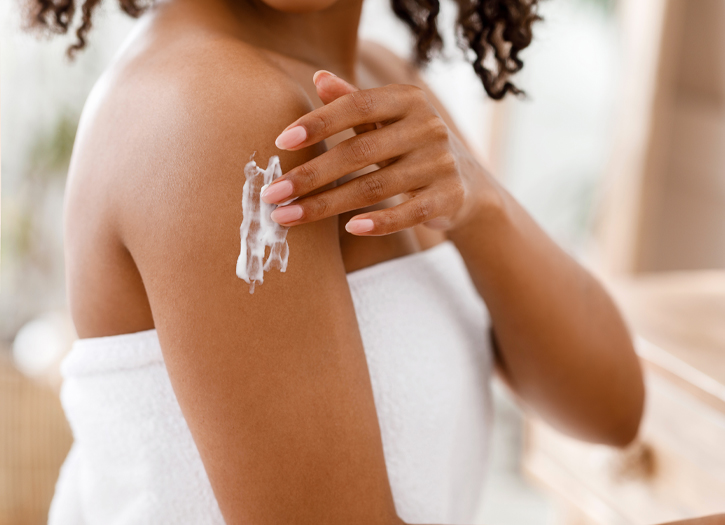Skin whitening, also known as skin lightening and skin bleaching, is the practice of using chemical substances in an attempt to lighten the skin or provide an even skin color by reducing the melanin concentration in the skin.
Several chemicals have been shown to be effective in skin whitening, while some have proven to be toxic or have questionable safety profiles. This includes mercury compounds which may cause neurological problems and kidney problems. In a number of African countries, between 25 and 80% of women regularly use skin whitening products. In Asia, this number is around 40%. In India, specifically, over half of skin care products are sold to whiten skin. Areas of increased pigmentation such as moles may be depigmented to match the surrounding skin. Effective agents for specific areas include corticosteroids, tretinoin, and hydroquinone.
Skin lightening creams have commonly contained mercury, hydroquinone, and corticosteroids. Because these compounds can induce both superficial and internal side effects, they are illegal to use and market in multiple nations. However, various chemical studies indicate that these compounds continue to be used in sold cosmetic products, though they are not explicitly declared as ingredients. Prolonged usage of mercury-based products can ultimately discolor the skin, as mercury will accumulate within the dermis. Mercury toxicity can cause acute symptoms such as pneumonitis and gastric irritation. However, according to a study by Antoine Mahé and his colleagues, mercurial compounds can also contribute to long-term renal and neurological complications, the latter of which includes insomnia, memory loss, and irritability.
Other studies have explored the impact of hydroquinone exposure on health. Hydroquinone rapidly absorbs into the body via dermal contact; long-term usage has been found to cause nephrotoxicity and benzene-induced leukemia in bone marrow. A study by Pascal del Giudice and Pinier Yves indicated that hydroquinone usage is strongly correlated with the development of ochronosis, cataracts, patchy depigmentation, and contact dermatitis. Ochronosis can subsequently lead to lesions and squamous cell carcinomas. While hydroquinone has not been officially classified as a carcinogen, it can metabolize into carcinogenic derivatives and induce genetic changes in the form of DNA damages.
Additionally, corticosteroids have become some of the most commonly incorporated lightening agents. Long-term usage over large areas of skin may promote percutaneous absorption, which can produce complications such as skin atrophy and fragility, glaucoma, cataracts, edemas, osteoporosis, menstrual irregularities, and growth suppression. A 2000 study performed in Dakar, Senegal indicated that chronic usage of skin lighteners was a risk factor for hypertension and diabetes. Chemically lightened skin is also more highly susceptible to sun damage and dermal infection. Long-term users of skin bleachers can easily develop fungal infections and viral warts. Pregnant users may also experience health complications for both them and their children.
These products are marketed to both men and women, though studies indicate that, in Africa, women use skin bleachers more than men do. A study by Lester Davids and his colleagues indicated that nations in Africa present high rates of usage for skin bleachers.


















Add Comment